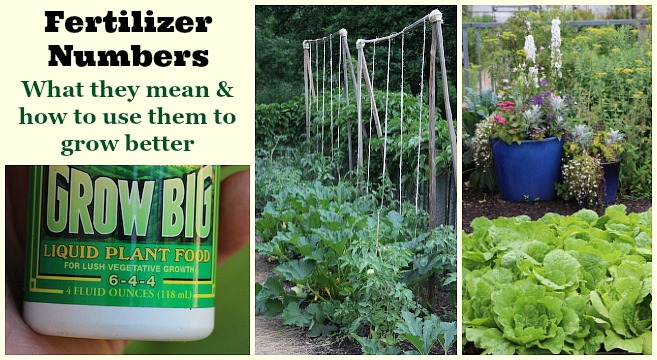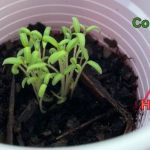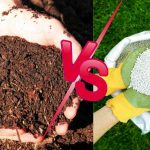Yes, you can effectively combine compost and fertilizer in your garden. Compost and organic fertilizers harmoniously complement one another as the organic substances within compost act like nutrient reservoirs, releasing essential elements to plants as needed. Furthermore, compost provides a plethora of micronutrients like boron, vital in small quantities for plant growth.
Introducing compost and fertilizer together can greatly benefit your garden or landscape by enhancing soil fertility and promoting vigorous plant growth.
Compost is derived from organic materials, such as kitchen scraps, yard waste, and animal manure, which break down naturally to form nutrient-rich humus.
By adding compost to the soil, you not only improve its structure, water-holding capacity, and drainage but also introduce a wide range of essential nutrients and beneficial microorganisms.
While compost is a valuable addition to the soil, it may not provide sufficient levels of specific nutrients required by plants for optimal growth. This is where fertilizers come into play.
Fertilizers are formulated to supply plants with specific nutrients, such as nitrogen, phosphorus, and potassium, that may be lacking in the soil.
By combining compost and fertilizer, you can address both the overall soil health and the specific nutrient needs of your plants, resulting in healthier, more productive vegetation.
What Is Compost And Components Of Compost?
Compost can be defined as a rich, organic material that is derived from the decomposition of various organic matter. It is produced through a natural process called composting, in which microorganisms break down organic materials such as kitchen scraps, yard waste, and other plant-based materials.
A well-made compost is a valuable addition to any garden, as it enriches the soil with essential nutrients and improves its structure. Compost contains a variety of beneficial components, including:
- Humus: The stable organic matter that remains after the decomposition process.
- Nutrients: Compost is a rich source of essential nutrients like nitrogen, phosphorus, and potassium.
- Microorganisms: Compost is teeming with beneficial microorganisms that enhance soil fertility and help plants absorb nutrients effectively.
The presence of these components in compost makes it a valuable soil amendment that enhances soil health, improves water retention, and promotes a vibrant ecosystem within the soil.

Different Types Of Fertilizers And Their Functions
Fertilizers, on the other hand, are substances that are specifically designed to provide plants with essential nutrients they may lack in the soil. There are different types of fertilizers available, each with its own specific functions and nutrient compositions. Some common types of fertilizers include:
- Organic Fertilizers: These fertilizers are derived from natural sources, such as animal manure, compost, or plant-based materials. They release nutrients slowly and promote long-term soil health.
- Inorganic Fertilizers: Also known as synthetic fertilizers, these are manufactured and formulated to deliver specific combinations of nutrients quickly. They provide an immediate nutrient boost to plants but may not contribute to soil health in the long run.
- Slow-Release Fertilizers: These fertilizers are designed to provide a controlled release of nutrients over time, ensuring a steady supply of essential elements to plants throughout their growth cycle.
How do Compost And Fertilizers Complement Each Other?
When used together, compost and fertilizers can effectively meet the nutrient demands of plants and promote overall soil health. Compost enhances the soil structure, improves drainage and moisture retention, and provides a gradual release of nutrients over time.
This slow-release action of compost complements the quick nutrient boost provided by fertilizers, resulting in a balanced supply of essential elements to plants.
Moreover, compost acts as a natural buffer, preventing the leaching of nutrients from the soil and reducing the risk of fertilizer runoff and water pollution.
Fertilizers, on the other hand, can target specific nutrient deficiencies based on soil tests and plant requirements, providing an instant nutrient solution when needed.
Pros and Cons of Using Compost and Fertilizer Together
| Pros | Cons |
|---|---|
| Short- and long-term benefits | Doesn’t improve soil structure |
| Improves soil structure | May lack nutrients |
| Increases water and nutrient retention | Slow results |
| No toxin buildup | |
| Reduces need for fertilizer | |
| Can add fertilizers to composting pile | |
| Compatible with organic fertilizers | |
| Reduces the need for synthetic fertilizers |
How To Apply Compost And Fertilizer Together?
Applying compost and fertilizer together can provide an ideal combination of nutrients and organic matter to boost plant growth and health. Lets explore different techniques for incorporating compost into the soil, methods of applying fertilizers alongside compost, and dos and don’ts for efficient application.
Techniques For Incorporating Compost Into Soil
There are several effective techniques for incorporating compost into the soil, ensuring that it is evenly distributed and mixed thoroughly:
- Spreading and turning: Start by spreading a layer of compost over the existing soil. Then, use a garden fork or a tiller to gently turn the compost into the soil, mixing it to a depth of about 6-8 inches. This technique works well for small garden beds.
- Double digging: Double digging involves removing a trench of soil, loosening the subsoil, and then incorporating compost into both the topsoil and subsoil layers. This technique is ideal for improving the structure of compacted or clayey soils.
- Sheet mulching: Also known as lasagna gardening, sheet mulching involves layering compost and other organic materials on top of the existing soil. Simply spread a layer of compost, followed by a layer of newspaper or cardboard, and repeat the process. Over time, the layers break down, enriching the soil beneath.

Methods Of Applying Fertilizers Alongside Compost
When using compost and fertilizer together, it is essential to apply them in a way that ensures they work in synergy:
- Topdressing: After incorporating compost into the soil, spread a thin layer of fertilizer over the top. Water the area to help the nutrients and compost blend into the soil.
- Side dressing: For plants that require additional nutrients during their growth stages, such as heavy feeders like tomatoes or squash, apply fertilizer in a shallow trench alongside the plants. Cover the fertilizer with a layer of soil or compost to prevent nutrient runoff.
- Fertigation: Fertigation involves applying liquid fertilizer through irrigation systems, ensuring a continuous supply of nutrients to plant roots. This method is commonly used in agriculture but can also be scaled down for home gardens.
Dos And Don’ts For Efficient Application
To make the most of combining compost and fertilizer, follow these dos and don’ts for efficient application:
| Dos | Don’ts |
|---|---|
| Do test your soil before applying compost and fertilizer to determine its nutrient levels and pH. | Don’t overdo it with the compost and fertilizer. Follow the recommended application rates to avoid nutrient imbalance or burning plants. |
| Do carefully read and follow the instructions on the packaging of the compost and fertilizer products you are using. | Don’t apply compost and fertilizer directly to plant foliage, as this can cause burning or damage. |
| Do water your garden thoroughly after applying compost and fertilizer to help them integrate into the soil. | Don’t apply compost and fertilizer in extreme weather conditions, such as hot and dry or heavy rain, as it can lead to nutrient loss or runoff. |
How To Maximize Results Of Compost And Fertilizer Together?
Combining compost and fertilizer can be a powerful strategy for maximizing results in your garden. The two work together to improve soil health, enhance nutrient availability, and promote vigorous plant growth.
Monitoring Plant Health and Growth
One of the key elements in maximizing the results of using compost and fertilizer together is monitoring the health and growth of your plants. By regularly checking on your plants, you can easily identify any nutrient deficiencies or excessive nutrient levels in the soil. This proactive approach allows you to address any issues before they become major problems.
Adjusting Compost and Fertilizer Application as Needed
To optimize the benefits of using compost and fertilizer together, it’s important to adjust their application based on the specific needs of your plants. Different plants have different nutrient requirements, and these needs may change over time as they grow.
Regularly evaluate your garden and make adjustments accordingly. You don’t want to overdo it with either compost or fertilizer, as excessive application can lead to nutrient imbalances and plant stress.
Tips for Maintaining a Lush Garden with Compost and Fertilizer
To ensure a lush and thriving garden, consider the following tips for using compost and fertilizer effectively:
1. Test Your Soil: Conduct a soil test to determine its nutrient levels and pH. This will help you understand the specific needs of your garden and guide your compost and fertilizer application.
2. Use Compost as a Base: Compost provides a wide range of nutrients and helps improve soil structure. Use it as a base before applying fertilizer. This way, you can enhance soil fertility and create an optimal environment for plant growth.
3. Time Application Appropriately: Apply compost and fertilizer at the right time to maximize their benefits. For example, apply compost in the spring to prepare the soil before planting, and use fertilizer during active growing periods to support plant development.
4. Follow Application Rates: Ensure you follow the recommended application rates for both compost and fertilizer. Over-application can harm plants and the environment, while under-application may not provide the desired results.
5. Consider Organic Options: If possible, choose organic compost and fertilizer to promote sustainable gardening practices and minimize chemical inputs.
6. Incorporate Compost into Planting Holes: When planting new plants or transplants, mix compost into the planting holes. This helps establish healthy root systems and improves water retention.
7. Mulch with Compost: Mulching with compost helps conserve moisture, suppress weed growth, and slowly release nutrients into the soil. Apply a layer of compost around your plants, leaving space around their stems to prevent rot.
8. Rotate Crops: Rotate your crops each year to prevent nutrient depletion and the buildup of pests and diseases. This practice allows your garden to benefit from the nutrients provided by compost and fertilizer more effectively.

Credit: savvygardening.com
Conclusion
To sum it up, combining compost and fertilizer can indeed lead to healthier and more productive plants. By using these two in tandem, you provide a balanced and nutrient-rich environment for your plants to thrive. Remember to follow the recommended application rates and adjust accordingly based on your plants’ needs.
So, go ahead and harness the power of compost and fertilizer to give your garden the boost it deserves. Happy gardening!

I am a graduate of Bangladesh Agricultural University, where I delved into various agricultural disciplines, equipping me with a profound understanding of agriculture. Beyond academics, I have hands-on experience in gardening and crop cultivation. My passion is to embrace sustainable farming and horticulture. With a BSc in Agriculture, I am dedicated to promoting environmentally conscious and efficient agrarian practices.
Bachelor of Science (BSc) in Agriculture (Hons.)
Master of Science. (Sustainable Agriculture & Food Security ) (MS)
Bangladesh Agricultural University




